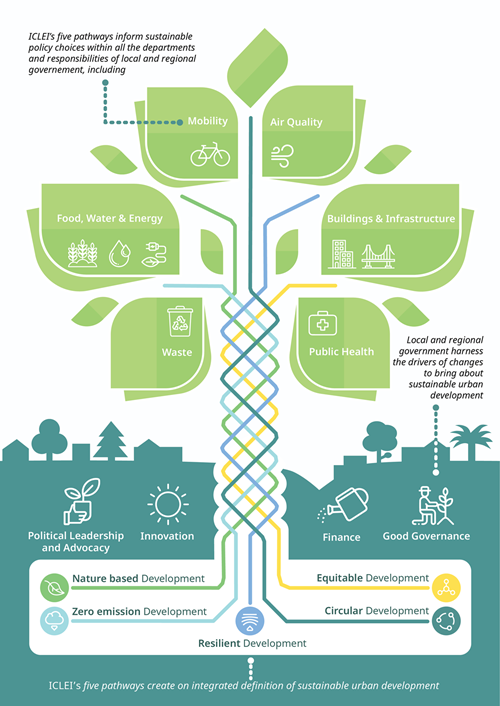Our Pathways, Our Approach
ICLEI engages at the local to global levels, shaping policy and sparking action to transform urban environments worldwide. We build connections across levels of government, sectors and stakeholder groups, sparking city-to-city, city-to-region, local-to-global and local-to-national connections. By linking subnational, national and global actors, policies, commitments and actions, ICLEI strengthens action at all levels, in support of sustainable urban development.
As a compass to direct our actions in a rapidly changing world and to transform our cities, towns and regions, ICLEI drives action through five critical, strategic and interlinked pathways: equitable development, zero emission development, nature-based development, circular development and resilient development. These pathways are the basis for sustainable urban development.
At the local and regional levels, ICLEI drives change along these five interconnected pathways that intersect all sectors in our communities. They provide a framework for designing integrated solutions that balance the patterns of human life and the built and natural environments. They encourage holistic thinking to ensure that ICLEI, as a network of local and regional governments and global experts, optimizes our impact.
By following these interconnected pathways, cities, towns and regions worldwide can advance toward the sustainable future they have envisioned for themselves by developing integrated solutions and creating change across whole urban systems.
These pathways were released as part of the ICLEI São Paulo Strategic Vision 2024-2030 — our pledge to make sustainable development the only model for development in the urban 21st century. The pathways were originally conceived at the ICLEI World Congress 2018 in Montréal, as a part of the ICLEI Montréal Commitment and Strategic Vision 2018-2024.
While an activity or implemented project may be primarily driven by a single or few pathways, the goal is always to implement projects and initiatives in such ways that they generate impact across all five pathways. We design our work to integrate as many pathways as possible. When more pathways are integrated into any given activity, such as a project, partnership or initiative, a greater degree of change can occur.




